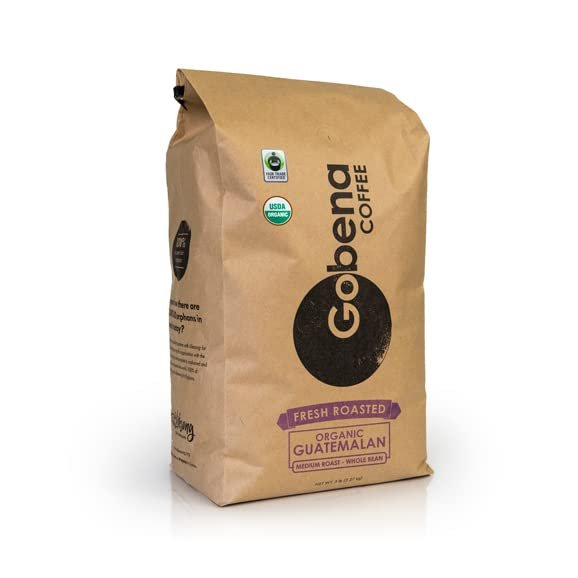Ever wondered if you can use regular coffee beans for espresso? If you’re a coffee enthusiast, you’ve likely pondered this question. Understanding the difference between regular coffee beans and espresso beans can help you make better choices for your morning brew. In this post, we’ll explore the nuances of using regular coffee beans for espresso, why it might work, and what to keep in mind for the best results.
What Makes Espresso Beans Special?
Espresso beans are typically roasted darker and longer than regular coffee beans. This process brings out rich, robust flavors that stand up well to the high-pressure brewing method used for espresso. Regular coffee beans, on the other hand, can range from light to dark roasts. The key difference lies in the roasting process, which impacts flavor, aroma, and even the caffeine content.
Can You Really Use Regular Coffee Beans for Espresso?
The short answer is yes, you can use regular coffee beans for espresso. However, the outcome might not be what you expect. Espresso requires a fine grind and precise pressure to extract the flavors properly. Regular beans might not deliver the same depth and richness typically associated with espresso. It’s essential to adjust your expectations and perhaps experiment a bit to find the right balance.
The Roasting Process
The roasting process for espresso beans involves a longer and hotter roast. This results in a dark, oily bean that produces a rich, bold flavor. Regular coffee beans can be roasted to various levels. Light roasts are more acidic and have a higher caffeine content, while medium roasts offer a balanced flavor. Dark roasts are closest to espresso beans in terms of flavor profile but may still lack the intensity needed for a perfect espresso shot.
Grinding the Beans
Grind size is crucial when making espresso. The fine grind allows for maximum flavor extraction under high pressure. Regular coffee beans, especially lighter roasts, might not grind as well to the required fineness. Investing in a quality burr grinder can make a significant difference in achieving the right grind consistency.
The Brewing Method
Espresso machines use high pressure to force hot water through finely-ground coffee. This process extracts flavors quickly and intensely. Regular coffee beans can be used in an espresso machine, but they may not produce the same crema and rich taste. Adjusting the grind size and experimenting with different beans can help you get closer to the desired result.
Flavor Profile Differences
Espresso is known for its bold, concentrated flavor. Using regular coffee beans might result in a milder taste, depending on the roast. Light roasts will produce a more acidic shot, while medium and dark roasts can come closer to traditional espresso flavors. It’s worth experimenting to find a roast that suits your taste preferences.
Caffeine Content
Interestingly, espresso has less caffeine per ounce than regular coffee due to its concentrated nature. Light roasts have the most caffeine, while dark roasts have slightly less. If you’re looking for a caffeine kick, using regular coffee beans for espresso might give you a stronger jolt, especially with lighter roasts.
Cost Considerations
Regular coffee beans are often cheaper than specialty espresso beans. If you’re on a budget, using regular beans for espresso can be a cost-effective option. Just be prepared for some trial and error to achieve the best results.
Experimentation is Key
One of the joys of being a coffee enthusiast is experimenting with different beans and brewing methods. Trying regular coffee beans for espresso opens up a world of possibilities. Keep a journal of your experiments, noting the grind size, bean type, and brew time. Over time, you’ll develop a method that works best for you.
Expert Opinions
Coffee experts often recommend using beans specifically roasted for espresso to achieve the best results. However, many also acknowledge that good-quality regular beans can work well with some adjustments. Don’t be afraid to seek advice from baristas or join coffee enthusiast forums to share experiences and tips.
Equipment Matters
Investing in good-quality equipment can make a significant difference when using regular coffee beans for espresso. A reliable espresso machine and a high-quality burr grinder are essential. These tools ensure you can achieve the right grind size and pressure for the best extraction.
Common Mistakes to Avoid
When using regular coffee beans for espresso, avoid common mistakes such as using an inconsistent grind size or not adjusting your brew time. These factors can significantly impact your espresso’s taste and quality. Take the time to fine-tune your process for the best results.
Fair Trade Organic Certified Guatemalan Whole Bean Medium Roast Coffee

- Arabica Specialty Coffee
- 80 ounces
- Whole Bean
- Caffeinated
Final Thoughts
Using regular coffee beans for espresso is a viable option for coffee enthusiasts willing to experiment. While you might not achieve the same richness as with specialty espresso beans, you can still enjoy a satisfying cup. Adjust your expectations, fine-tune your grind and brewing methods, and explore the wide world of coffee possibilities.
FAQs
Can I use any type of regular coffee beans for espresso?
Yes, but results may vary depending on the roast and grind size.
Do I need a special grinder for espresso?
A burr grinder is highly recommended for achieving the fine grind necessary for espresso.
Will using regular coffee beans damage my espresso machine?
No, but using the wrong grind size can affect the machine’s performance.
How can I improve the flavor of espresso made with regular beans?
Experiment with different roasts, grind sizes, and brew times to find the best combination.
Are there cost benefits to using regular coffee beans for espresso?
Yes, regular coffee beans are often cheaper than specialty espresso beans.






